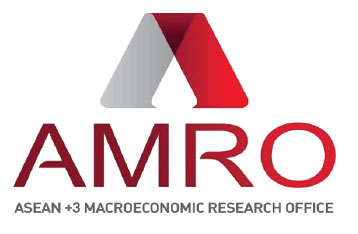Latest Update: AMRO Director Toshnori Doi speaks with ABS-CBN News Channel anchor Cathy Yang on the amended CMIM Agreement and its role as ASEAN+3 region’s financial safety net.
Transcript:
Role of amended CMIM
-
-
- CMIM is a regional financial arrangement among ASEAN+3 countries.
- Designed to provide USD liquidity in times of need for the member countries.
- The recent COVID-19 situation posed a large challenge for the member countries in the region; massive capital outflow around Feb to Mar period and tightening of financial conditions. Some countries experienced weakness in their currency.
- CMIM is designed to provide liquidity to countries in need.
- The latest amendment is to enhance operational readiness; to make it easier and more accessible for the countries.
-
How does the amended version work?
-
-
- The Philippines is a major member of the arrangement.
- Through its central bank, the Philippines provides liquidity to other members and can receive USD from other countries.
- The Philippines commits more than USD 9 billion. At the same time when in crisis, the Philippines can receive close to USD 23 billion.
- CMIM is a swap arrangement.
- It is how ASEAN+3 members help out each other.
-
Has CMIM ever been used?
-
-
- CMIM is an insurance policy for the region.
- The region has learned lessons well from the Asian Financial Crisis. Over the years, ASEAN+3 countries have built up enough forex reserves, built up policy buffers, and engage in sound macroeconomic policies.
- This region is able to buffer the shock with existing resources.
- It is fortunate that CMIM has never been activated.
-
How will that work if all members draw down simultaneously?
-
-
- ASEAN+3 is well diversified. Some countries have no issues with liquidity shortage.
- Countries in the region are prepared to meet this kind of shock.
- The Philippines has massive capital outflow around Feb and Mar period but capital returned after that. Foreign exchange of the pesos has also been strengthening.
- By and large, CMIM will be able to provide enough liquidity to any country in need under extremely stressful circumstances.
-
How has the fund grown since?
-
- A total of USD 240 billion has been pledged by all countries.
- A large part can be co-financed with the IMF; another part, about 30% can be activated without any IMF involvement.
- The latest amendment improves operational readiness in the IMF-Linked portion. Ensures IMF-Linked portion activation can be done smoothly.
- All countries are in a comfortable position in handling the COVID-19 situation.
- We do not see any immediate request for CMIM funding.
